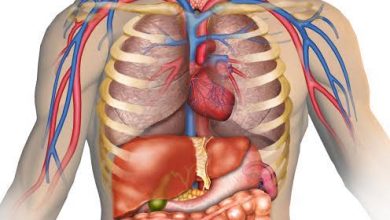Universities With The Lowest Cut-Off Marks For Home Economic and Education In Nigeria
Are you trying to find the list of Nigerian universities with the lowest cut-off mark required to get admitted to the home economics and education programs? Read on to know Nigeria Universities with the lowest cut-off mark.
If you want to pursue a career in home economics and education but are unsure about the most recent jamb cutoff mark for a course like home economics and education.Here is a list of Nigerian institutions that have cut-off mark that we have verified; it is the lowest of all the universities in Nigeria that provide home economics and education programs.
READ ALSO: List Of Universities That Has Lowest Cut-off Mark For Anthropology
Universities With The Lowest Cut-Off Marks For Home Economic and Education In Nigeria

To gain admission into an home economics and education program at a Nigerian university, meeting the cut-off mark for the subject is essential. The following universities have some of the lowest cut-off marks for home economics and education.
1. University of Nigeria Nsuka (UNN)
Cut off mark: 180
The University of Nigeria, Nsuka is not only one of the most famous educational institutions in Nigeria, but it is also one of the most competitive.
On October 7, 1960, it was finally opened to the public after being discovered by Nnamdi Azikiwe in the year 1955.
Approximately two or more campuses are managed by the University of Nigeria Nsuka. According to the benchmark established by the Joint Admission Board, the minimum pass score is 140. To be on the safe side, a score of 180 or above is required for courses with a low level of competition, while a score of 200 is required for courses with a greater level of competition.
It is dependent on the overall performance of the applicants in a quota that is provided by the heads of departments that the departmental cutoff point is different.
In order to determine her minimum score, the University of Nigeria employs a ratio of sixty to forty.
2. Delta State University, Abraka (DELSU)
Cut off mark: 180
It is commonly referred to as DELSU, which stands for Delta State University, Abraka. This university is controlled by the state government of Nigeria, and its main campus is situated in Abraka, Delta State. Additionally, the university has a sub-campus near Oleh. The Amended Edict of 1995 was the impetus for the establishment of the Oleh campus.Both of the university’s campuses are located within a radius of around 52 km from one another, making it a multiple-campus institution. At the moment, the university has a student population of approximately 22,000 (during the 2019/2020 session), and it provides a variety of programs, ranging from full-time certificate, diploma, and degree programs to part-time evening and weekend degree programs.Diplomatic and Postgraduate Studies at DELSU are available up to the PhD level. DELSU is the owner of a number of different infrastructures, including a staff and student counselling facility, an e-learning centre, student housing, and sporting facilities. One of the more than twenty-five universities that are owned by the state and are supervised and accredited by the National Universities Commission is this particular institution.
3. University of Benin (UNIBEN)
Cut off mark: 200
The University of Benin is a well regarded educational institution. 1970 is the year when it was formally formed.
There is always a cutoff mark of 200. As a result, in order to be eligible for post-university examinations, prospective students need to have a score of 200 or above.
Candidates are expected to achieve at least fifty points higher than one hundred on the post-university examination (post-UTM) in order to qualify or be eligible for admission to the University of Benin.
4. University of Lagos (UNILAG)
Cut-off Mark: 180
One well-known home economics and education program that the University of Lagos (UNILAG) offers is one with a comparatively low cut off score. The university strives to offer top-notch instruction in the fields of home economics and education while placing a high priority on each student’s complete development.
READ ALSO: List Of Universities That Has Lowest Cut-off Mark For Applied Mathematics with Statistics
FAQS
What exactly is the relation between education and home economics?
Produce entrepreneurs in trade areas linked to home economics and hospitality management education. These trade areas include, but are not limited to, the following:
- trades relating to food and hospitality,
- textile trade,
- fashion and garment makingtrade,
- and institutional management trades, amongst others.
What are the subject combinations that are found in the field of education and home economics?
COMBINATION OF UTME and JAMB Subjects for Home Economics and Education is being offered. Listed below is the UTME/JAMB subject combination for Home Economics and Education, which includes :
- English Language
- Chemistry,
- Biology
- or Agricultural Science
- Is there a course of study in home economics at the university?
Is home economics course in the university?
The Department of Home Economics has been in operation ever since the University of Uyo was founded in 1991. Its headquarters are located within the Faculty of Agriculture. There is a Bachelor of Science (B. Sc) program, a Master of Science (M. Sc) program, and a Ph.D. program in Home Economics that can be completed in four years.
Which seven subject areas make up the majority of home economics?
The act of cooking. One of the earliest subjects in home economics is cooking, which is not surprising given that food preparation was an essential part of homemaking:
- Child Development,
- Education, and Community Awareness,
- Home Management and Design,
- Sewing and Textiles,
- Budgeting and Economics,
- Health and Hygiene,
- Home Management and Design are some of the topics that will be covered.









